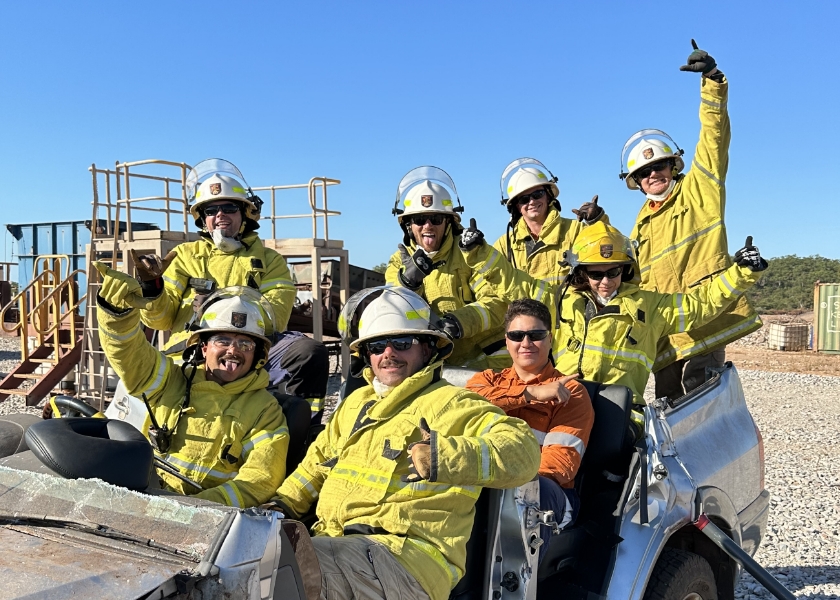Four-wheel driving, or 4WD, offers a unique blend of adventure and challenge, taking motorists and workers off the beaten path and into unpredictable terrain. To navigate such environments safely and effectively, proper training is not just beneficial, it’s essential. 4WD driving training equips individuals with the skills and knowledge necessary to handle a variety of off-road situations confidently.
This form of specialised instruction covers a range of topics, from understanding the technical aspects of a 4WD vehicle to mastering driving techniques that respond to the diversity of rugged landscapes.
The value of being prepared for the unexpected cannot be overstated when venturing into remote areas where conditions can change rapidly. 4WD driving training provides practical experience in real-world scenarios, instilling a sense of preparedness in drivers. It emphasises the importance of decision-making and risk assessment, which are crucial when faced with obstacles such as steep inclines, water crossings, and uneven terrain. Through this training, drivers learn to anticipate and react to various challenges, ensuring their safety and that of their passengers.
Additionally, the environmental aspect of 4WD driving is often underscored during training. Responsible driving practices are taught to minimise the impact on natural habitats, preserving them for future enjoyment. This education is an investment not only in personal safety but also in promoting sustainable adventuring. As a student progresses through their training, drivers become adept at selecting the appropriate techniques for each unique situation they encounter, making them versatile and prepared for whatever the trail may bring.
Preparing Mentally for the Journey
4WD driving training not only equips drivers with practical skills but also fortifies their mental preparedness for the unpredictable nature of off-road conditions.
Mentally bracing oneself for the wide array of scenarios one might encounter is a cornerstone of comprehensive driver training programs.
Training typically encourages a state of calm alertness, where the driver remains composed yet fully attentive to the driving environment.
Stress management techniques are taught, as well-being in control of one’s emotions significantly reduces risk while driving in challenging situations.
Participants learn the importance of situational awareness, such as understanding vehicle capabilities, recognising terrain challenges, and anticipating weather complications.
This awareness enables them to make better judgements and decisions under pressure. They are also instructed in the value of patience and perseverance, especially when faced with obstacles that necessitate slow and deliberate manoeuvres.
A prepared mind also understands the necessity of adaptability. Drivers are taught to continuously assess and reassess their environment and to be willing to adjust their strategy as conditions change. This flexibility can be the difference between successfully navigating a difficult track and becoming immobilised.
Equally, the psychological benefits of 4WD training involve building confidence through acquired knowledge and experience, which empowers drivers to tackle unpredictable terrains. It ingrains an understanding that, while the journey may present hurdles, they have the skills and mindset to overcome them.
Understanding Your 4WD Vehicle
To drive a 4WD vehicle skillfully off-road, one must have a comprehensive understanding of its systems and ensure its maintenance is kept to a high standard for reliable performance.
Anatomy of 4WD Systems
Four-wheel drive vehicles are equipped with complex mechanics that provide power to all four wheels simultaneously, enhancing traction in challenging terrains. These systems include transfer cases, differentials, and a series of drive shafts.
The transfer case redirects power from the transmission to both the front and rear axles through drive shafts. Differentials then allow the wheels to rotate at different speeds, which is vital during turns or when traversing uneven surfaces.
Maintenance Tips for Peak Performance
Regular maintenance is imperative for any vehicle, particularly for 4WDs that endure harsh driving conditions. One should routinely check and change the oil to ensure gears operate smoothly.
Tyre pressure should be monitored and adjusted according to the terrain to prevent unnecessary wear and maintain grip.
Furthermore, it is crucial to inspect suspension components and undercarriage for damage after off-road use, as these areas are susceptible to impacts. By adhering to a structured maintenance schedule, one can ensure their 4WD remains in optimal condition.
Navigating Different Terrains
Proper 4WD training equips drivers with the skills to confidently handle a variety of challenging landscapes they may encounter. The following subsections detail techniques for mastering different terrains.
Mud and Water Crossings
In Australia, drivers may often come across boggy paths and unforeseen water barriers. Training educates on assessing water depth and ground consistency to ensure a vehicle can safely traverse these obstacles. Key advice includes entering water slowly to avoid engine flooding and maintaining a steady momentum in mud to prevent becoming stuck.
Rocky Paths and Steep Inclines
Navigating through rocky terrain requires precise vehicle control and an understanding of the vehicle’s approach, departure, and breakover angles. Courses teach the importance of tyre placement and the use of low-range gears to climb steep inclines safely. It is also crucial to know how to utilise engine braking when descending to reduce the reliance on brakes and prevent skidding.
Sand Driving Techniques
Sand driving demands a distinct skill set due to the loose and shifting nature of the surface. Drivers learn to reduce tyre pressure to improve traction and to perform gentle, sweeping turns to avoid getting bogged down. Quick reactions and the right recovery gear are essential should the vehicle become stuck in a sand dune.
Safety First
When embarking on a 4WD adventure, safety is a non-negotiable priority. This section covers the essential gear to have on board, the right way to pack your vehicle, and how to interpret weather and environmental conditions.
Essential Gear to Carry
Every 4WD enthusiast needs to equip their vehicle with safety gear tailored to the challenges they might face.
High-priority items include a first-aid kit, a fire extinguisher, recovery gear such as snatch straps and a shovel, and communication devices like a satellite phone or a UHF radio. It’s also imperative to have a tyre repair kit and a portable air compressor for handling punctures. Navigation tools such as GPS and detailed maps are crucial for route planning and staying oriented.
How to Pack Your Vehicle
Properly packing a 4WD is critical for safety and ease of access to gear in an emergency. Heavier items should be stored as low as possible to maintain the vehicle’s centre of gravity. This limits the risk of rollovers when traversing uneven terrain.
All items must be secured to prevent them from becoming projectiles during a sudden stop. Emergency supplies, such as water and food rations, should be readily accessible.
Understanding Weather and Environmental Conditions
Before heading out, one must understand the weather patterns and environmental conditions of their destination. They should check forecasts and be prepared for sudden changes that could affect traction and visibility.
Knowledge of local terrain can prevent encounters with impassable roads or hazardous areas prone to flooding or landslides. Awareness of environmental conditions is not only crucial for safety but also ensures responsible 4WD practices to protect natural habitats.
Recovery Techniques
Mastering recovery techniques is essential for safe and successful 4WD driving. Knowing when and how to recover your vehicle can mean the difference between getting stuck and continuing your journey.
Self-Recovery Basics
Self-recovery involves using the equipment and resources available to the driver to extricate the vehicle without outside assistance. This often includes the use of a winch, which should be securely anchored to a solid point, such as a tree or a sturdy anchor buried in the ground.
It’s crucial to maintain a straight line between the winch and the anchor point to maximise efficiency and minimise risks. In addition, traction aids such as recovery boards can provide the necessary grip for tyres, allowing the vehicle to move out of slippery or soft terrain.
Drivers must assess the situation calmly, determining whether digging, winching, or employing traction aids is the most appropriate method.
When to Call for Help
There are circumstances where self-recovery is not advisable or possible due to safety concerns or the lack of recovery options. In such cases, calling for professional recovery services is necessary. This decision should come after evaluating the risk of vehicle damage or personal injury.
Signs that outside help is needed often include the vehicle being precariously balanced, submerged in water, or when one’s own recovery efforts have failed after several attempts.
Specialist recovery services are equipped with the tools and expertise to handle complex situations, ensuring the vehicle is retrieved without causing further harm. It’s crucial to have a reliable means of communication, such as a satellite phone, to call for help, especially in remote areas where mobile reception is limited.
Responsible Driving Practices
4WD training instils a strong sense of responsible driving practices that are essential for safely handling challenging terrains. Participants learn to assess road conditions and adjust their driving techniques accordingly.
Key among these practices is the consistent use of seatbelts, ensuring that all passengers are secured before the vehicle is in motion. Proper vehicle maintenance is a cornerstone of responsible 4WD use.
Drivers are taught to check tyre pressure, fluid levels, and brake systems regularly. These checks are vital not only for vehicle performance but also for preventing breakdowns in remote areas.
Environmental awareness is also a crucial part of the training. Drivers learn to navigate off-road tracks without causing unnecessary damage to the landscape. This includes sticking to established tracks, avoiding sensitive vegetation, and understanding the local wildlife to minimise the impact on their habitats.
Course instructors emphasise the importance of knowing one’s limits. Faced with challenging situations, drivers are encouraged to evaluate the risk before proceeding. This cautionary approach is not a sign of inexperience but a testament to a driver’s willingness to make judgements for the safety of all involved.
Lastly, 4WD training covers the need for thorough preparation. This encompasses route planning, understanding weather patterns, and carrying essential supplies. Whether it’s a high-probability event like changing a tyre or a low-probability event like an emergency evacuation, preparation is key to dealing with the unexpected.
Advanced Driving Skills
One is better equipped to handle rough terrain and unexpected driving challenges with proper 4WD training, which includes mastering advanced driving skills such as precision steering and braking, as well as ascent and descent control.
Precision Steering and Braking
When navigating tough off-road conditions, the ability to steer precisely and apply brakes effectively is critical. Drivers learn the importance of adjusting steering inputs gently and braking before, rather than during, a turn to maintain stability and control.
Techniques like threshold braking, where one applies the greatest amount of pressure on the brake pedal without locking the wheels, are taught to maximise stopping power on loose surfaces.
Ascent and Descent Control
Managing ascents and descents requires a keen understanding of vehicle capabilities and the use of appropriate techniques to tackle steep inclines and declines safely.
Instructors teach drivers how to use their vehicle’s low-range gears and traction control systems to their advantage, ensuring controlled and steady progress.
Proper ascent involves approaching hills at a consistent speed, while descent control emphasises the use of engine braking to reduce speed, rather than relying solely on the brakes which could lead to loss of traction.
Conclusion
4WD driving training equips individuals with the skills and knowledge to safely navigate diverse terrains and unpredictable conditions.
Trainees are taught to assess road conditions and make informed decisions dynamically, ensuring safety. The training emphasises vehicle control and recovery techniques, important when confronting obstacles off-road.
Participants gain confidence to handle their vehicles in various situations, from crossing the water to ascending steep inclines. The course also instils an understanding of environmental considerations, promoting responsible and sustainable driving practices.
With this training, drivers are better prepared to face the unexpected, reducing the risk of accidents and vehicle damage. The investment in 4WD training is not only an investment in personal skill development but also in safer, more enjoyable off-road adventures.

